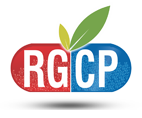News & Events
Notification
Facilities at RGCP
India in Pharma sector
The Indian pharmaceutical industry meets over 50% of global demand for various vaccines, 40% of generic demand in the U.S. and 25% of all medicine in the U.K.
Presently, over 80% of the antiretroviral drugs used globally to combat AIDS (Acquired Immune Deficiency Syndrome) are supplied by Indian pharmaceutical firms.
The Indian pharmaceuticals market is the world’s third-largest in terms of volume and thirteenth-largest in terms of value. It has established itself as a global manufacturing and research hub.
Context:
US President Donald Trump has said he has urged Prime Minister Narendra Modi to relax India’s ban on hydroxychloroquine tablets so that the drug can be used to treat America’s COVID-19 patients.
A day earlier, India’s Directorate General of Foreign Trade had prohibited export of the anti-malarial drug, which the US has described as a game-changer in the battle against the novel coronavirus.
The US president’s request is reportedly on the table of the high-level Group of Ministers (GoM) that reviews, monitors and evaluates the country’s COVID-19 response activities.
Brazil has joined the US in urging India to lift the ban on hydroxychloroquine — India is one of the global leaders in the production of the drug.
The GoM headed by Union Minister of Defence must take into account the interests of all stakeholders in the country before arriving at a decision on relaxing the export ban.
Hydroxy-chloroquine against COVID-19:
The drug shows antiviral activity in vitro against coronaviruses, and specifically, SARS- CoV-2 [the virus that causes COVID-19].
2/4
Further, the study suggests that prophylaxis (treatment given to prevent disease) with hydroxy-chloroquine at approved doses could prevent SARS-CoV-2 infection and may help to improve viral shedding.
Clinical trials are under way in China to know whether the drug can be used for treatment.
About Hydroxy-chloroquine :
1. Hydroxy-chloroquine is an oral drug used in the treatment of autoimmune diseases such as rheumatoid arthritis. Autoimmune diseases are in which the body’s immune system attacks healthy cells.
2. The popular anti-parasitic medication has been available since the 1940s. It’s been used to treat malaria.
3. HCQ is a derivative of chloroquine, and has fewer side-effects.
4. Rheumatoid arthritis is a chronic inflammatory disorder affecting many joints, including those in the hands and feet.
5. Chloroquine works by increasing the levels of haem or heme, a substance toxic to the malarial parasite in the blood. This kills the parasite and stops the infection from spreading.
ICMR Recommends Use of Hydroxy-Chloroquine:
Indian Council of Medical Research (ICMR) is the apex body in India for the
formulation, coordination and promotion of biomedical research.
Its mandate is to conduct, coordinate and implement medical research for the benefit of the Society, translating medical innovations into products/processes and introducing them into the public health system.
The Indian Council of Medical Research (ICMR) recommends the use of hydroxychloroquine as a prophylactic for asymptomatic healthcare workers and contacts of people who have been infected by the virus.
3/4
The ICMR’s decision on wider use of the drug will, reportedly, depend on further research.
Use of Hydroxy-Chloroquine yielded better results:
1. At the same time, research in other parts of the world has sparked interest in a more expansive use of the anti-malarial medicine.
2. A study by Chinese researchers, for instance, showed that the drug speeded up the recovery of COVID-19 patients who had suffered pneumonia.
3. Experiments on the drug have also yielded promising results in France. Some experts have called for more tests before hydroxychloroquine is held up as a cure for COVID- 19.
4. But some of the early naysayers of the drug, including the US Food and Drug Administration, have now come around to recommending its use in emergency situations.
5. Hydroxychloroquine as a COVID-19 palliative, by all accounts, seems to be a work in progress.
6. However, in a world embroiled in a grim struggle against COVID-19, reports of the early success of the drug have generated hope especially in the US, the country hit hardest by the pandemic.
7. In such a situation, it is critical that India’s decision on the US request be an informed and considered one.
Conclusion:
India has one of the lowest manufacturing costs in the world – lower than that of the U.S. and almost half of the cost in Europe.
As the country plans to intensify the battle against the novel coronavirus in hotspots, the GoM’s decision must be based on consultations with a wide range of experts
— scientists, public health and foreign policy experts and representatives of the pharma industry.
4/4
India should look up to and invest in biotechnology. India’s biotechnology industry, comprising biopharmaceuticals, bio-services, bio agriculture, bio-industry and bioinformatics is expected to grow at an average rate of around 30% a year and reach
$100 billion by 2025.
To ensure health security of Indian people, revival of R&D and public sector API manufacturers is necessary. For example, the Council of Scientific and Industrial Research (CSIR) should be promoted to invest in R&D.
PRARTHNA LAKHERA
ASSISTANT PROFESSOR (RGCP)
College Address
College At:- Near Sultanpur Bird Sanctuary,
Farrukhnagar, Distt.- Gurgaon, Haryana
Phone:- 9818511778
Email:- rgcpcollege@gmail.com
Head Office
A1/11, Prashant Vihar Rohini,
Near Pitampura Metro Station,Opposite Power House
New Delhi, India-110085
Copyright©2005-2024 Ram Gopal Colllege of Pharmacy.All rights reserved. Chairman Message Committee Teaching Department SIF Report-2022-23 World Pharmacist Day



